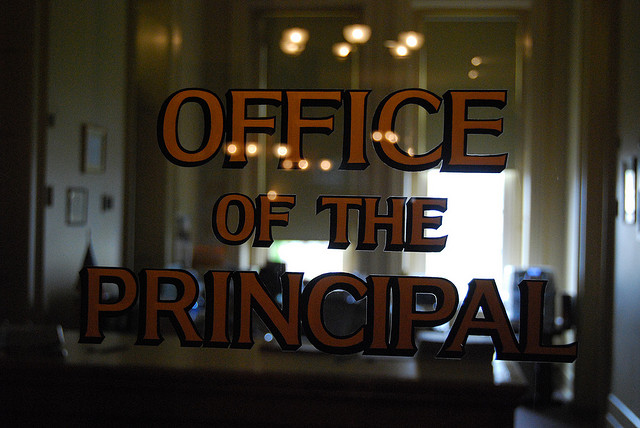Student discipline: On when to suspend
By Caroline O'Donovan

Student discipline: On when to suspend
By Caroline O'Donovan
A lot of them go like this: A student is suspended for an offense like stealing something from another student’s locker. He’s been known to have been hanging out with gang-affiliated kids and is suspended for two weeks. During those two weeks, he gets no support; he falls behind on homework and whatever led him to steal from another student is not addressed. When he gets back to school, he is frustrated and feels even more disengaged than before. He ends up getting in a fight, and although no one is hurt he’s suspended for two more weeks. Now he’s missed a month of school. Eventually, he is expelled, and does not return.
In Emma Tai’s ideal world, the student in this example would have received support throughout his first suspension, so that he was able to return to school on the path to success. When Tai came to VOYCE four years ago, her goal was to provide those emotional support systems and advocate for preventative methods in dealing with students with behavioral issues. What she found, however, was a system with so much turnover in terms of expulsions that there was no way to build a solid foundation for such programs.
So VOYCE turned its attentions to reducing what they see as too harsh student penalties and lowering the expulsion rate in hopes of fostering a less hostile learning environment for students.
When Jean Claude Brizard took over as CEO of CPS a year ago, hopes at VOYCE were high that real change could be made. And indeed, within the year, Brizard started the Department of Youth Development and Positive Behavior Supports, a division aimed at doing just the kind of work VOYCE supported. According to CPS, expulsion rates were reduced by 43 percent, but student rights’ advocates weren’t satisfied, and Tai began petitioning for an overhaul of the CPS Student Conduct Code, the document that outlines how students may be punished for what crimes.
In many older models, like Chicago’s, teachers have flexible jurisdiction over the extent to which a student can be punished. For example, Jim Freeman of the Advancement Project described Denver’s former system as “any punishment” for “any behavior,” meaning a student could receive a severe punishment like a 10-day suspension for something like loitering or running in the halls. When Denver did away with this system in favor of more lenient rules with more cautiously apportioned penalties, Freeman says, graduation rates rose 30 percent.
When VOYCE started pushing for similar reforms in Chicago, CPS was originally willing to try them, forming a working group and workshopping ideas with representatives from Denver’s school board. According to Tai, however, after final revisions were submitted, CPS officials only gave community members two days before the vote to submit comments. CPS told Tai the new draft is being vetted, but with the exclusion of Chicago Teacher’s Union members, parents, students and VOYCE staff, she can’t imagine who is doing the vetting.
While I was unable to reach CPS’s Chief Safety and Security Officer Jadine Chou by phone, a representative did say that some of the claims regarding CPS’s unwillingness to cooperate were blatantly false, and that VOYCE opted to air many of their grievances only to the media.
What seems to be widely accepted is that CPS does not live up to Chicago Mayor Rahm Emanuel’s promised standard of citywide government transparency. When it comes to finding data on how many students have even been expelled and suspended, let alone information on the race of those students, multiple sources agreed that the school system is notoriously reticent. Racial disparity in school penalties is a major problem, one that we can’t hope to address until accurate data is made available, according to Tai.
The school board will vote on the new draft of the Student Conduct Code on Wednesday. While not all of VOYCE’s recommendations will be included, some certainly will. Regardless of what’s on the books, it will take a long time before all CPS schools become places where all students feel they are being helped and nurtured rather than detained.
One major outstanding issue in Chicago, according to Jim Freeman, is the city’s unusually high rate of school based arrests, an aberration that CPS has yet to address publically. Though of course, there will always be those that believe strict rules and harsh punishments are the best ways to provide students with a sense of structure, especially those students whose lives outside of school may be the most unstable.
At the end of April, CPS released a new, “holistic” approach to student safety that touches on everything from multi-stakeholder involvement in decision making process, to improved CTA bus-tracking services to reduce the amount of time students spend at bus stops. Wednesday morning, WBEZ education reporter Becky Vevea will update us on the upcoming code of conduct vote, and other reforms Brizad and CPS have been pushing for in terms of student safety. Emma Tai will also join the conversation to talk about why she believes students need and deserve greater leniency. To participate in the conversation or share your or your student’s stories, call 312.923.9239.
